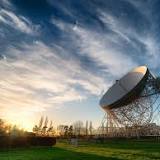How do you wish someone a happy Lohri - and why is the festival celebrated?


Lohri is an official holiday celebrated mostly by people in the Punjab, Jammu Region and Himachal Pradesh states of India.
Many people celebrate Lohri in January to mark the winter solstice, signifying the end of winter and to welcome the longer days as the sun starts its journey to the northern hemisphere.
But what is Lohri and how do people celebrate it?
Lohri is observed a night before Makar Sankranti, also known as Maghi, a festival to mark the sun’s transition into Capricorn.
According to a historical Hindu calendar used in the Indian subcontinent, the Vikrami calendar, Lohri is celebrated around the same date every year, 13 January, in the Gregorian calendar.
As Lohri is celebrated across the Punjab state, some people observe it in Pakistan, although not on an official level. Some Muslims, Hindus, Sikhs and Christians observe this holiday in the rural areas of Punjab and the cities of Faislabad and Lahore.
Lohri is also linked to several solar festivals throughout south India, such as Pongal, which is typically on 14 January.
Pongal is a multi-day Hindu festival celebrated mainly by Tamils to mark the month of Tai and is dedicated to Sunya, the Sun God.
Not much is known about Lohri’s authentic origins, other than its beginnings in the Himalayas.
There is a lot of folklore shrouding Lohri, and it’s generally known to be a festival marking the end of winter, and the arrival of longer days after the winter solstice.
According to folklore, Lohri is observed at the end of the month of which the winter solstice occurs, as the days begin to grow longer and the sun begins its northbound journey.
With its association with the sun and light, Lohri is also a tribute to the Sun God Surya, with songs sung to celebrate his return.
Folklore tales of Lohri are also associated with legends of Dulla Bhatti, a mediaeval warrior who led a revolt against the Mughal emperor Akbar. Bhatti became a folk hero by stealing from the rich to give to the poor and rescuing young Hindu girls sold into slavery.
According to the stories, he even used the money he stole to pay for the girls’ dowries so they could marry local village boys.
Historically, Lohri also marks the end of the winter harvest, and crops such as sugarcanes were collected on this day. For this reason, Lohri is still seen by some Punjabi farmers as the start of the financial year.
The folk holiday of Lohri is about light, so many people celebrate this holiday with a roaring bonfire. Fire symbolises the return of the sun and longer days. Yet it also symbolises the victory of light over dark, warmth over cold and life after death.
Throughout the Punjab region, children play games like trick or treat, or sing traditional songs for sweets and money. People also mark the harvest festival by eating sheaves of roasted corn and sugarcane products from the new harvest.
Dishes involving mustard greens are traditionally eaten and served.
People in the Jammu region make garlands and celebrate with traditional dances such as Hiran Dance and Chajja.
Bright colours and dancing are a key part of Lohri as it celebrates a new transition in the year. It’s a day where friends and family celebrate by singing traditional folk songs hailing the tales from long ago.
Since this day is about happiness and prosperity, you can wish someone a happy Lohri by simply saying “happy Lohri for 2022”.
Messages including the sun and warmth are also poignant, so mentioning happiness, warmth and prosperity in the messages are always appreciated.
A message from the editor:
Thank you for reading. NationalWorld is a new national news brand, produced by a team of journalists, editors, video producers and designers who live and work across the UK. Find out more about who’s who in the team, and our editorial values. We want to start a community among our readers, so please follow us on Facebook, Twitter and Instagram, and keep the conversation going.


 United Kingdom
United Kingdom Argentina
Argentina  Australia
Australia  Austria
Austria  Brazil
Brazil  Canada
Canada  Germany
Germany  Ireland
Ireland  Italy
Italy  Malaysia
Malaysia  Mexico
Mexico  New Zealand
New Zealand  Poland
Poland  South Africa
South Africa  United States
United States 

















